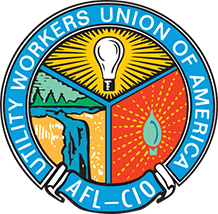Timely and accurate financial reporting is of the utmost importance. The National Union’s goal is to continue providing guidance and/or support to help ensure the compliance of our affiliated locals and councils. To that end, we continue to provide financial and leadership training with financial officers and local union leaders. Whether at smaller member-to-member settings or in larger groups like a regional conference, our organization is committed to assisting and reinforcing the importance of regulatory compliance and protecting our union’s funds and assets.
The UWUA continues to work with the Department of Labor (DOL) through the Voluntary Compliance Partnership Program to assist our affiliates’ compliance with the Office of Labor Management Standards (OLMS). We continue to review several of the Voluntary Compliance Program objectives, including the following: 1) Continued partnership in the program; 2) Successful transition to the new mandatory electronic filing requirements; 3) Bonding requirements; 4) Review of all affiliate’s compliance; and, 5) Utilization of OLMS resources to assist the UWUA financial training efforts.
Listed below, are several key components for reference and proper filing. As always, please do not hesitate to contact the National Office for guidance, clarification or assistance.
DOL Filing Requirements
What Form do you file?
Depending on size of the organization’s receipts, there are three potential forms your local union would be required to file:
* Form LM-2 – required when your local union’s total annual receipts were $250K or more.
* Form LM-3 – required when your local union’s total annual receipts were $10K or more, but less than $250K.
* Form LM-4 – required when your local union’s total annual receipts were less than $10K.
When is the Form due to the DOL?
The Form LM-2, LM-3 and LM-4 are required to be filed within 90 days after an organization’s fiscal year-end and must be filed electronically. The DOL does not authorize or allow extensions.
Fidelity Bonding Requirements
The Labor-Management Reporting and Disclosure Act (LMRDA) provides that any person who handles union funds must be bonded for an amount of at least 10% of the funds handled (including assets and income) during the previous fiscal year up to a maximum of $500,000. The coverage must be computed at the start of each fiscal year and any increase in coverage must be adjusted promptly. The National Office does obtain the coverage for your local union or council through a national policy. In order to obtain the coverage, each affiliate must provide the National Office with the amount of coverage needed annually. Please contact the National Office for assistance in determining the amount of bonding required.
IRS Filing Requirements
What IRS Form do you file?
Depending on size of your local union’s assets and receipts, there are three potential forms organizations would be required to file:
* 990-N (Postcard) – if your union normally has gross receipts of $50K or less
* 990-EZ – if your union has gross receipts less than $200K and total assets at the end of the tax year less than $500K
* Form 990 (full form) – which is filed if either gross receipts are greater than or equal to $200K or total assets are greater than or equal to $500K at the end of the tax year.
When is the Form due to the IRS?
All forms are to be filed electronically and for organizations that have a calendar year end of December 31 the Form 990, 990-EZ, and 990-N is due May 15th (4 and ½ months after year end). Organizations can apply for an extension which will extend the time to November 15th (10 and ½ months after year end). Steep monetary penalties may apply for late filers.
Ramifications for Non-Compliance
In addition to monetary penalties, if you do not file for three consecutive years, your local union’s tax exemption will be automatically revoked and will be considered a taxable entity and possibly be subject to income taxes similar to for-profit entities. Once this occurs, there is a fairly lengthy application process to get reinstated as a tax-exempt organization – so please make sure to comply with the annual filing requirements.

